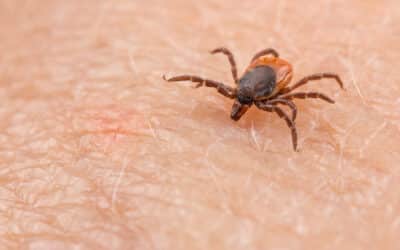
Pest Identification: Earwigs
Earwigs are insects named from a European myth that they crawl into people's ears, which has no scientific basis. These bugs, numbering over 20 species in the U.S., are ¼-1 inch long with elongated, flattened bodies ranging in color from pale brown with dark markings to black. They have six legs, long antennae, and notable pincers on their abdomen. While they have two pairs of wings, not all fly, and those that do, only in short bursts.
Earwigs are nocturnal, feeding on leaves, flowers, fruits, mold, and insects, preferring damp, undisturbed places during the day. Some species damage crops and garden plants, while others prey on smaller arthropods. They congregate outdoors in large numbers, often under lawn debris or in tree holes, and may enter homes seeking moisture or due to weather changes.
In terms of reproduction, female earwigs lay eggs in small burrows, displaying maternal behavior by tending to the eggs and nymphs. Earwigs primarily use their pincers for reproduction, hunting, and defense, and while they can pinch humans, it's generally harmless. They don't spread diseases but some species emit a foul odor for defense. Their presence is more of a threat to gardens than to humans.
Earwigs have a one-year lifespan, undergoing metamorphosis from egg to nymph to adult, molting five times. They can fly but rarely do so. Natural predators include birds, lizards, frogs, and other insects. Ecologically, earwigs are beneficial, cleaning up dead plants and insects, but can harm live plants when other food sources are scarce. They balance roles as environmental janitors and potential pests.


"Very efficient, used safety practices, kept me informed, exceptional professional."
-E. Kruczek

"We are very happy & satisfied with our technician."
-D. Auger

"We are very happy with your service. We will be ongoing customers."
-B & J. Douty
The best service starts here.
We’re the most trusted pest control and lawn care company in Central Massachusetts. But don’t take our word for it. Read real reviews from happy customers. Then call us and join our growing list of residents, families, and businesses who depend on Ford’s Hometown Services to protect what matters most.
Buzzwords
Mastering Carpenter Ant Pest Control: Tips from the Experts
There are ants — and then there are carpenter ants. If you see one, you’ll know. Not only are they among the largest ants in the U.S., they can be quite destructive. Keep reading to discover important information about carpenter ants, including how to spot them, how...
Understanding Tick Behavior: Strategies for Long-Term Pest Control
Do you hate ticks? You’re not alone. A recent study by the National Pest Management Association found that 1 in 3 Americans are concerned about being bitten by bloodsucking pests like mosquitoes, ticks, and bed bugs. And for good reason — tick-borne diseases are on...
The Silent Destroyers: A Comprehensive Guide to Termite Pest Control
Everyone has heard the saying that termites have been around since the time of the dinosaurs. It’s true. Termites date back more than 120 million years! To say they are hard to kill is an understatement. That’s why taking termite pest control seriously is critical for...










